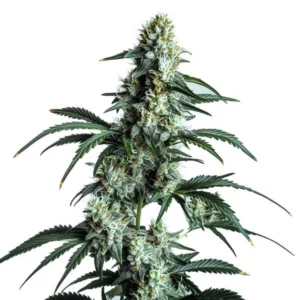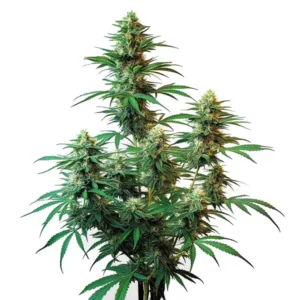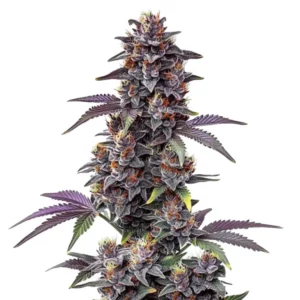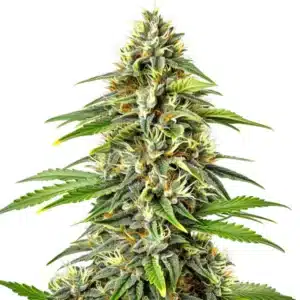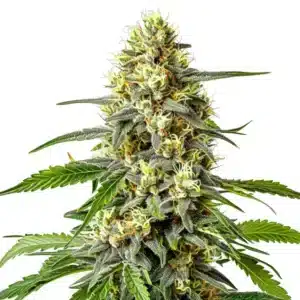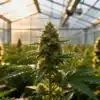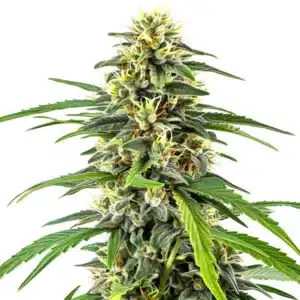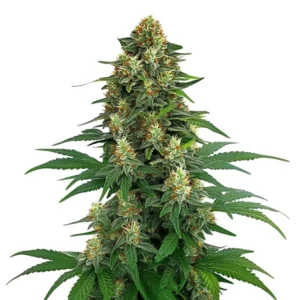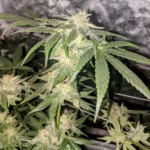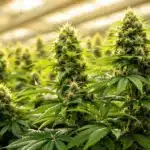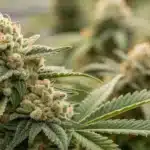
How To Grow Sour Diesel Strain
Sour Diesel Seeds Description
Sour Diesel is a powerful sativa-leaning strain celebrated for its pungent, fuel-like scent and uplifting high. Cultivators with some experience often gravitate toward this variety, as it demands careful attention and a skilled hand to thrive.
Sour Diesel Strain , also referred to as “sour desil” or “sourdiesel,” is a highly sought-after cannabis strain known for its pungent aroma, energizing effects, and impressive THC content. This hybrid strain is a cross between Chemdawg, Super Skunk, and Northern Lights, resulting in a unique and potent genetic profile.
Recommended Strains
Sour Diesel
|
|
THC | 22% - 25% (Medium) |
|
|
Type | Feminized |
|
|
Yield | High |
|
|
Phenotype | 30% Indica / 70% Sativa |
Sour Diesel Autoflower
|
|
THC | 16% - 23% (Medium) |
|
|
Type | Autoflowering |
|
|
Yield | Low |
|
|
Phenotype | 40% Indica / 60% Sativa |
Sour Diesel buds are characterized by their bright green color, covered in orange hairs and a glistening layer of trichomes. The aroma of Sour Diesel is unmistakable, with a strong diesel scent combined with notes of citrus and earthiness. For those looking for more sour diesel grow info, understanding these bud characteristics can help gauge the quality and maturity of the plant.
Promos & Deals
Environmental Requirements for Growing Marijuana Sour Diesel Seeds
To successfully cultivate Sour Diesel Strain, it’s essential to create the ideal environment that mimics its native conditions. Here are the environmental requirements for growing Sour Diesel:
Sour Diesel, a popular choice for both indoor sour diesel strain and outdoor sour diesel plant cultivation, thrives in a temperate climate with temperatures ranging between 68-77°F (20-25°C) during the day and slightly cooler nights. Maintaining a stable temperature and humidity level is crucial to prevent stress or potential issues like mold or mildew.
When growing Sour Diesel indoors, whether using sour diesel feminized seeds or regular seeds, provide high-quality LED grow lights or HPS lamps to ensure proper photosynthesis and vigorous growth. During the vegetative phase, maintain a light cycle of 18-20 hours of light per day, and switch to 12 hours of light and 12 hours of uninterrupted darkness to initiate flowering.
For outdoor cultivation of sour diesel marijuana, choose a sunny and warm location with well-draining soil to maximize the benefits of sour diesel weed growth. Sour Diesel thrives in a Mediterranean-like climate. If your region has cooler temperatures, consider using a greenhouse to extend the growing season and protect your plants from adverse weather conditions.
Setting Up The Growing Cannabis Space
Before you start growing Sour Diesel Strain, ensure you have an efficient and organized growing space, whether indoors or outdoors:
Indoor Cannabis Cultivation
For indoor growers exploring how to grow sour diesel indoors, selecting the right grow tent or dedicated grow room is crucial. Ensure there’s enough vertical space for your plants to grow, and maintain proper ventilation for fresh airflow. Use an exhaust system with a carbon filter to control odors and prevent heat or humidity buildup. Reflective materials or Mylar sheets can maximize light distribution and avoid light leaks.
Choose a suitable growing medium for Sour Diesel Strain, such as high-quality soil or a hydroponic system, depending on your preferences and experience. Ensure proper drainage to prevent overwatering and maintain a pH level of around 6.0-6.5 for optimal nutrient absorption.
Outdoor Cannabis Cultivation
When cultivating Sour Diesel strain outdoors, select a location with plenty of sunlight and well-draining soil. Ensure the soil is rich in organic matter. Consider using large containers or fabric pots for better control over soil quality and root health. Documenting your progress in a sour diesel grow journal can help track conditions and improvements. Additionally, protect your plants from strong winds by placing them near a fence or using windbreaks.
Support your Sour Diesel Strain plants, especially in sour diesel outdoor grows, with stakes or trellises to prevent branches from bending under the weight of the dense buds and to promote better airflow.
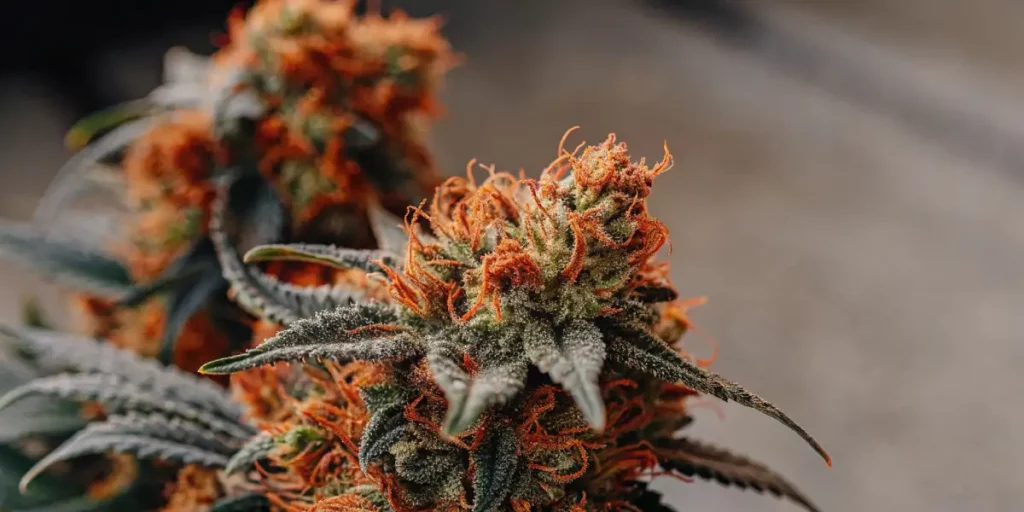
Propagation and Germination of Marijuana Sour Diesel Seeds
Successful germination of sour diesel seeds and propagation are essential for healthy Sour Diesel Strain plants. Follow these steps for the best sour diesel seeds germination rate and successful propagation:
1. Start by selecting high-quality Sour Diesel seeds from a reputable seed bank to ensure genetic stability and feminization of your plants.
2. Begin the germination process by soaking the seeds in distilled water or a damp paper towel for 24-48 hours. Maintain a temperature between 70-85°F (21-29°C) in a dark and undisturbed environment.
3. Once the seeds have soaked and developed taproots, transfer them carefully to a pre-moistened growing medium, such as a seedling tray or small pots with light and well-draining soil mix.
4. Place the seeds in a warm and humid environment with gentle airflow, maintaining a temperature around 75-80°F (24-27°C) and humidity at 60-70% for optimal germination.
5. Provide indirect light to the seedlings during the first few days, gradually increasing the light intensity as they develop. Avoid exposing them to intense light or heat that could cause stress or damage.
6. Once the seedlings have developed a few sets of true leaves, they are ready to be transplanted into larger pots or the final growing containers.
Following these germination and propagation steps ensures a strong start for your Sour Diesel Strain plants, setting the stage for healthy growth and abundant yields.
Vegetative Phase of Cannabis Sour Diesel Strain
The vegetative phase is a critical stage in the development of Sour Diesel Strain plants. Here are key considerations during this phase:
Lighting: Provide your Sour Diesel Strain plants with 18-20 hours of light per day to encourage vigorous vegetative growth. High-quality LED grow lights or HPS lamps are recommended to ensure sufficient light intensity and spectral distribution.
Nutrition: During the vegetative phase, Sour Diesel Strain plants require a balanced and nutrient-rich diet. Use a reputable cannabis fertilizer with higher nitrogen (N) content to encourage healthy leaf and stem growth. Follow the manufacturer’s instructions and monitor the plants for any signs of nutrient deficiencies or excesses.
Watering: Water your sour diesel seeds plants when the top inch of soil feels dry. Avoid overwatering, which can lead to root rot and other moisture-related issues. Allow the soil to slightly dry between watering sessions, but ensure the plants don’t experience extreme drought.
Training: Consider training techniques like low-stress training (LST) or topping to manage sour d seeds growth effectively to control the height and shape of your Sour Diesel Strain plants. These methods create an even canopy, increase light penetration, and promote better bud development.
Pruning: Remove lower branches or leaves with little light or signs of disease or pests. This improves airflow and reduces the risk of mold or mildew.
Providing the right environmental conditions, nutrition, and care during the vegetative phase ensures healthy and robust Sour Diesel Strain plants, ready for the flowering stage.
Flowering Phase of Marijuana Sour Diesel Seeds
The flowering phase for sour diesel strain is highly anticipated as the sour diesel flower develops its characteristic buds. Here’s what you need to know:
Lighting: Adjust the light cycle to 12 hours of light and 12 hours of uninterrupted darkness to initiate the flowering phase. Use a timer to maintain a consistent light schedule. Sour Diesel Strain plants require intense light during this stage, so ensure your grow lights provide adequate coverage and maintain the appropriate distance from the canopy.
Nutrition: Transition from a nutrient formula higher in nitrogen to a bloom or flowering-specific nutrient formula to optimize sour diesel effects and maximize yields. These formulations are generally higher in phosphorus (P) and potassium (K), promoting bud development and overall flowering performance. Monitor the plants closely and adjust nutrient levels to avoid deficiencies or toxicities.
Temperature and Humidity: Maintain a slightly lower temperature during flowering, especially for sour diesel outdoor grow setup, ideally around 65-75°F (18-24°C), to encourage resin production and prevent heat-related stress. Aim for humidity levels around 40-50% to minimize the risk of mold or bud rot.
Support: As your Sour Diesel Strain plants enter the flowering phase, the weight of developing buds may cause branches to bend or break. Provide adequate support using stakes or trellises to ensure the plants can bear the weight and avoid bud damage.
Flowering Time: Sour Diesel Strain typically has a flowering time of 8-10 weeks. Knowing the exact sour diesel strain flowering time helps maximize yields, but this can vary depending on the phenotype and environmental conditions. Monitor trichome development using a magnifying tool to determine the optimal harvest window.
Throughout the flowering phase, maintain vigilance for signs of pests or diseases. Implement proper pest management practices and take immediate action at the first sign of infestation or abnormalities.
Cannabis Fertilization and Nutrition – Sour Diesel Strain
Proper nutrition and fertilization are crucial for maximizing growth, yield, and overall health of Sour Diesel Strain plants. Consider the following tips:
Choosing the Right Fertilizer: Select a high-quality cannabis-specific fertilizer or nutrient line with a balanced blend of macro and micronutrients. Look for products rich in nitrogen (N), phosphorus (P), and potassium (K) to support healthy growth, root development, and bud formation.
Feeding Schedule: Follow the manufacturer’s instructions and adjust the feeding schedule based on your plants’ specific needs. Start with a lower concentration and gradually increase it as plants progress through growth stages. Monitor plants for nutrient deficiencies or excesses and make adjustments as needed.
Supplements and Additives: Consider incorporating supplements and additives to enhance specific aspects of plant development. These may include bloom boosters, beneficial microbes, enzymes, or organic amendments that improve soil structure and nutrient availability.
Regularly monitor plants’ response to the feeding program, adjusting nutrient concentrations and frequencies as needed. Remember to flush plants with pure water during the final weeks of flowering to remove excess salts or nutrients that can affect flavor and quality.
Pest And Disease Control for Cannabis Growing – Sour Diesel Strain
While Sour Diesel Strain is known for its resilience, it’s still susceptible to pests and diseases. Implementing proper pest and disease control measures is crucial to protect your plants and ensure a successful cultivation. Here are some preventive and corrective actions:
Prevention:
- Regularly inspect plants for signs of pests like spider mites, aphids, or thrips. Early detection prevents full-blown infestations.
- Maintain a clean growing space, removing dead plant material and debris that could harbor pests or pathogens.
- Introduce beneficial insects like ladybugs or predatory mites to control pests naturally.
- Ensure proper airflow and ventilation to reduce the risk of mold or mildew.
- Quarantine new plants or clones before introducing them to prevent the spread of pests or diseases.
Corrective Actions:
- If you detect pests, use organic or low-toxicity pest control products specifically formulated for cannabis. Follow instructions carefully and avoid harsh chemicals that can compromise your harvest’s quality.
- For fungal diseases like powdery mildew or botrytis, remove infected plant material, increase airflow, and consider using organic fungicides or natural remedies like neem oil or a milk spray solution.
- For severe infestations or persistent diseases, consult with a professional grower or horticulturist for tailored advice and appropriate solutions.
Harvesting and Curing for Cannabis Growing – Sour Diesel Strain
Harvesting your sour diesel marijuana at the right time ensures potent effects and premium-quality sour diesel weed and properly curing the buds are crucial steps to preserve aroma, flavor, and potency. Follow these guidelines:
Trichome Maturity: Use a magnifying tool to examine trichomes on the buds. Wait until they have the desired maturity, indicated by a milky or cloudy appearance with some amber trichomes. This ensures the optimal balance of cannabinoids and terpenes.
Harvesting: Use clean, sterilized pruning shears or scissors to cut branches one by one. Be careful not to damage the buds during the process. Remove large fan leaves but leave smaller sugar leaves intact, as they contribute to the final bud structure.
Drying: Hang harvested branches upside down in a dark, well-ventilated area with a temperature around 60-70°F (15-21°C) and humidity levels around 50-60%. Ensure proper airflow and avoid overcrowding to prevent mold or mildew. Drying typically takes about 7-10 days, but monitor the buds for the right moisture content. They should feel dry on the outside, with a slight snap when you bend a stem.
Curing: After drying, transfer the buds to airtight glass jars or containers. Burp the jars daily for the first week to release excess moisture and prevent mold. Gradually reduce burping frequency to once a week over the next few weeks. The curing process can take 2-8 weeks, or even longer for optimal flavor and potency development.
Storage: Once cured, store your Sour Diesel Strain buds in a cool, dark, and dry place, preferably in a humidity-controlled container like a CVault or Boveda pack. Properly stored buds can maintain their quality for several months to a year or more.
Throughout the drying, curing, and storage phases, maintain a clean and odor-free environment to preserve the unique aroma and flavor of Sour Diesel Strain cannabis.

Sour Diesel Strain: Indica or Sativa?
Sour Diesel Strain, often called the diesel sour strain, is primarily considered a sativa-dominant hybrid. It’s known for its uplifting and energetic effects, making it a favorite among cannabis enthusiasts who seek a creative and euphoric experience. However, it’s important to note that individual strains and phenotypes can vary, so the effects may differ slightly depending on the specific genetics and growing conditions.
Typically, sativa-dominant strains like Sour Diesel are associated with the following effects:
- Euphoria and cerebral stimulation.
- Increased energy and focus.
- Enhanced creativity and sociability.
- Mood elevation and happiness.
- Relief from symptoms of depression, anxiety, and stress.
It’s important to consider your personal preferences and tolerance when choosing a cannabis strain, as individual reactions to different strains can vary. Sour Diesel Strain’s sativa-leaning characteristics make it a popular choice for daytime use and social activities.
Why buy Sour Diesel Seeds
There are several reasons why buying sour diesel seeds or sour diesel seed packs can be a worthwhile investment:
- Genetic Quality: Purchasing seeds from a reputable seed bank ensures genetic stability, feminization, and the potential for high-quality Sour Diesel plants.
- Variety: Growing your own Sour Diesel allows you to experience the unique flavor, aroma, and effects of this sought-after strain.
- Cost-Efficiency: Cultivating your own cannabis can be more cost-effective than purchasing finished products, especially if you harvest substantial yields.
- Control: Growing your own cannabis gives you control over the cultivation process, allowing you to choose organic methods and ensure product quality.
- Legal Compliance: Growing from seeds obtained through legal channels ensures compliance with local cannabis laws and regulations.
Problems in Cultivating Sour Seeds
While growing Sour Diesel cannabis seeds can be a rewarding experience, you may encounter some common challenges. Here are potential problems and solutions:
- Pest Infestations: Regularly inspect plants for pests and implement preventive measures like introducing beneficial insects or using organic pest control products.
- Disease Outbreaks: Maintain proper airflow, humidity levels, and cleanliness to prevent fungal diseases. Use organic fungicides when necessary.
- Height Control: Use training techniques like topping or LST to manage plant height and promote an even canopy.
- Odor Control: Employ carbon filters and adequate ventilation to control the strong odor emitted by Sour Diesel Strain plants.
- Overfeeding or Nutrient Issues: Monitor plants closely for signs of nutrient deficiencies or excesses and adjust your feeding regimen accordingly. Flush plants when necessary to remove excess salts.
- Harvest Timing: Timing the harvest is crucial. Use a magnifying tool to observe trichome maturity and harvest when they reach the desired stage.
By being proactive and addressing these issues as they arise, you can increase your chances of successfully cultivating Sour Diesel seeds and enjoying a bountiful harvest of high-quality buds.
Remember that cannabis cultivation may be subject to legal restrictions and regulations in your region. Always ensure compliance with local laws and guidelines when growing cannabis.
FAQS
What is the ideal environment for growing Sour Diesel seeds?
To successfully cultivate Sour Diesel, ensure a temperate climate with temperatures between 68-77°F (20-25°C) during the day and cooler nights. Indoors, use high-quality LED grow lights or HPS lamps and maintain a light cycle of 18-20 hours during the vegetative phase. Outdoors, select a sunny, warm location with well-draining soil, or use a greenhouse in cooler climates.
How long does it take for Sour Diesel to flower?
Sour Diesel typically has a flowering time of 8-10 weeks. The exact flowering time may vary depending on the phenotype and environmental conditions. It’s essential to monitor the trichomes closely to determine the optimal time for harvest.
Can Sour Diesel be grown indoors or is it better outdoors?
Sour Diesel can be successfully grown both indoors and outdoors. Indoors, ensure the use of quality lighting and proper ventilation, while outdoors, choose a sunny, warm location with well-draining soil. The strain thrives in a Mediterranean-like climate, so protecting the plants from cooler temperatures is essential.
What is the best way to propagate Sour Diesel seeds?
To propagate Sour Diesel seeds, start by soaking them in distilled water or a damp paper towel for 24-48 hours. Once the seeds develop taproots, transfer them into a pre-moistened growing medium like soil or a seedling tray. Keep them in a warm, humid environment, gradually introducing light to encourage healthy growth.
How should I manage pests and diseases while growing Sour Diesel?
To prevent pests and diseases, regularly inspect your Sour Diesel plants for signs of infestations and implement preventative measures such as using beneficial insects. Maintain proper airflow and cleanliness in your grow space to reduce the risk of fungal diseases. If pests or diseases appear, use organic solutions and act quickly to protect your plants.


